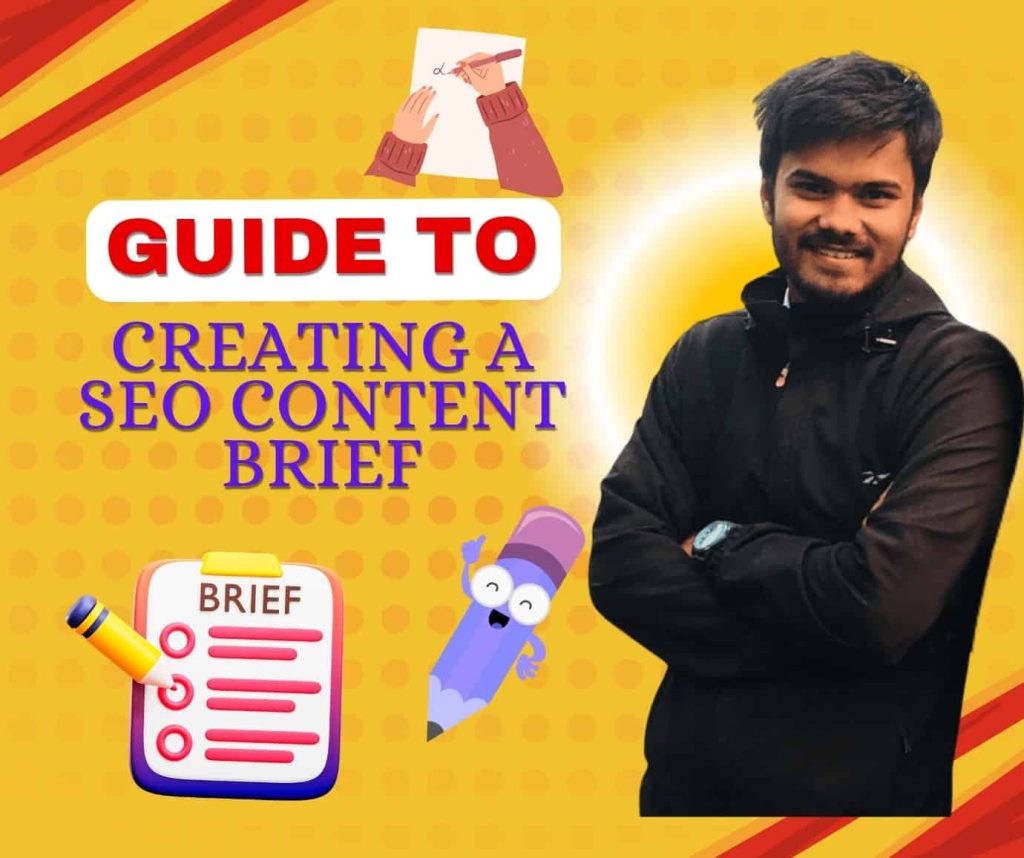Search engines constantly refine algorithms, pushing digital marketers to create structured, high-quality, user-focused articles. Without a clear framework, content creators risk producing unfocused blogs that fail to perform. This is where an SEO Content Brief becomes essential.
Whether you’re a freelancer, SEO learner, or digital marketing professional, this guide explains how to create an effective content brief from scratch. We’ll cover every stage, from research to final delivery, so your workflow stays efficient, writers stay aligned, and content ranks successfully.
What is an SEO Content Brief?


An SEO Content Brief is a structured document guiding writers, strategists, and marketers on how to craft articles optimized for search engines while delivering value to readers. It defines the topic, target keywords, search intent, content structure, tone of voice, competitor references, and formatting details.
Unlike general writing guidelines, a blog content brief focuses heavily on optimization, keyword placement, content flow, and alignment with an SEO content strategy. In practice, it acts as a roadmap for content creation, ensuring consistency across every piece of your SEO content plan.
Why is an SEO Content Brief Important?
Crafting powerful briefs ensures content stays on target, aligns with audience intent, and supports broader digital marketing content brief goals. Let’s explore why it matters:
- Consistency Across Writers
Freelancers or in-house writers often interpret assignments differently. An SEO writing brief eliminates ambiguity by outlining exact requirements.
- Improved SEO Performance
Proper content outline for SEO improves keyword mapping, enhances on-page optimization, and makes it easier to rank for long-tail keywords.
- Efficient Workflow
A clear SEO content workflow saves time for editors, content managers, and strategists.
- User-Centric Articles
Well-researched content brief examples integrate search intent, helping to address reader pain points while still ranking on SERPs.
- Stronger ROI
Investing time in structured planning ensures every SEO content draft contributes toward measurable business goals.
Step-by-Step Process to Creating a Powerful SEO Content Brief
Creating content brief is essential for content writing. They need to follow process to create it:
Step 1: Define Goals and Target Audience


Every SEO content creation process begins with clear objectives. Are you writing to attract organic traffic, generate leads, or support a topic clusters SEO strategy? Goals determine keyword choice, tone, and content depth.
Equally important is identifying your audience. Consider:
- Who is the reader?
- What challenges do they face?
- How does the content solve their problems?
This forms the foundation for a target audience brief.
Step 2: Conduct Keyword Research
An SEO content brief without keyword research is incomplete. Keywords guide both structure and optimization.
Process for keyword research brief:
- Use tools like SEMrush, Ahrefs, or Google Keyword Planner.
- Focus on long-tail keywords in content for better ranking opportunities.
- Map terms to user intent: informational, navigational, transactional.
- Prioritise search terms based on volume and competitiveness.
Example: For this guide, the primary term is SEO Content Brief, supported by related searches like content brief template, SEO article brief, and content optimization strategy.
This mapping creates a keyword strategy brief that aligns with your SEO content marketing framework.
Step 3: Analyze Search Intent
Search intent defines why someone searches. Understanding intent ensures your content writing outline addresses expectations.
There are four major types:
- Informational – user seeks knowledge.
- Navigational – user looks for specific websites.
- Transactional – user intends to purchase.
- Commercial – user compares before deciding.
When creating content briefs for writers, include details on search intent. Example: “Target users searching for ‘SEO content brief example’ are most likely SEO learners seeking templates.”
Step 4: Review Competitors
Competitor analysis highlights opportunities. Review the top-ranking pages for your target keyword. Look at:
- Content length and depth
- Heading structure
- Subtopics covered
- On-page SEO checklist elements like internal linking, FAQs, or schema
Create a SEO brief example section summarising competitor strengths and gaps. This helps writers differentiate and add unique value.
Step 5: Create Content Outline for SEO
Structure drives readability and ranking. A strong content outline strategy includes:
- Introduction with context and promise of value
- Subheadings (H2, H3, H4) for organisation
- Bullet points, tables, or infographics
- FAQs addressing related queries
Ensure your SEO-friendly article outline avoids repetition while covering semantically related terms.
Step 6: Provide On-Page SEO Guidelines
Writers need clarity on how to optimize content for SEO. Include a SEO content checklist in your brief covering:
- Primary and secondary keyword placement (title, intro, headings, conclusion)
- Meta title and meta description length guidelines
- Internal linking recommendations
- External references to authority websites
- Image optimization (alt text, file names)
- URL structure suggestions
By setting these rules upfront, you build a scalable SEO content framework.
Step 7: Include Tone of Voice and Style
Different audiences require different tones. Specify whether the content should sound formal, conversational, or technical. For example, a digital marketing content brief might require an educational tone at a grade 9 readability level.
Provide style notes such as:
- Sentence length limits
- Use of active voice
- Formatting rules (bold titles, H2/H3 hierarchy)
This ensures consistency across every SEO copywriting brief.
Step 8: Add Internal and External References
A good content research for SEO process involves curating trustworthy references. Briefs should include:
- Relevant competitor links
- Internal blog posts for interlinking
- Authoritative studies or statistics
This helps build credibility and strengthens SEO article planning.
Step 9: Add Content Length and Word Count Guidance
Content length often influences ranking. Based on competitor analysis and keyword difficulty, define an expected word range.
Example: “Recommended length for this SEO article brief is 2,000+ words to compete with top-performing articles.”
This prevents underdeveloped content that fails to address search intent.
Step 10: Build a Content Brief Template
To streamline your workflow, create a content brief SEO template that can be reused. A reusable format keeps SEO content management efficient and allows freelancers or agencies to quickly align.
Basic content brief template includes:
- Title and target keyword
- Objective and audience
- Search intent
- Competitor references
- Outline with subheadings
- On-page SEO guidelines
- Internal linking opportunities
- Word count and style notes
- References and resources
- Timeline and deadlines
This template evolves into an editorial brief SEO tool supporting your SEO content calendar.
Step 11: Use SEO Content Workflow Tools
Tools simplify the content briefing process. Consider:
- SurferSEO for on-page recommendations
- Trello or Asana for workflow management
- Frase or MarketMuse for content research
- Grammarly for style checks
Incorporating SEO content workflow tools ensures every article meets optimization standards.
Step 12: Final Review and Handover
Before handing briefs to writers, check:
- All keywords are included
- Tone of voice matches audience expectations
- On-page SEO checklist items are covered
- Structure follows the SEO content outline
A content briefing checklist guarantees nothing is missed. Once finalised, share the document with your writing team, ensuring expectations are clear.
Examples of Effective SEO Content Briefs
- Blog Brief Template for SEO Learners
- Goal: Educate beginners
- Keywords: SEO content brief, blog content brief
- Structure: Intro, definition, steps, examples, FAQs
- Goal: Educate beginners
- Website Content Brief for Service Pages
- Goal: Generate conversions
- Keywords: SEO content creation, SEO content optimization
- Structure: Hero section, benefits, features, CTA
- Goal: Generate conversions
- Digital Marketing Content Brief for Agencies
- Goal: Build authority
- Keywords: SEO content strategy, SEO content framework
- Structure: Strategy overview, step-by-step workflow, tools
- Goal: Build authority
Content Brief Best Practices
- Keep instructions clear but not overly rigid.
- Use keyword mapping for content to cover semantic variations.
- Always connect briefs to broader content optimization workflow goals.
- Adapt the SEO writing structure depending on audience type.
- Maintain flexibility for writers to add creativity.
Common Mistakes to Avoid
- Ignoring search intent in content draft for SEO.
- Overloading briefs with excessive details.
- Forgetting to include writer guidelines for SEO.
- Skipping competitor analysis in the SEO article workflow.
- Not updating the SEO content plan regularly.
Conclusion
An SEO Content Brief is more than instructions—it’s a structured framework that aligns writers, editors, and marketers toward a unified goal: high-ranking, reader-focused content. By following a proven content briefing system, you can streamline your SEO writing process, improve efficiency, and ensure every article supports long-term growth.
Adopting best practices outlined here—defining goals, researching keywords, mapping intent, structuring articles, and using tools—transforms your workflow into a scalable SEO content development engine.
Create your own SEO optimized content brief template today, and start producing content that not only ranks but also resonates with your audience.
